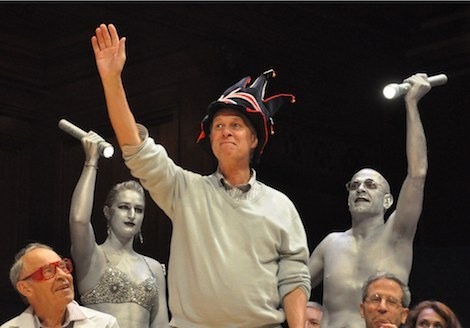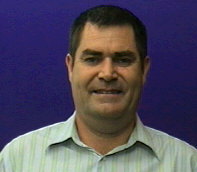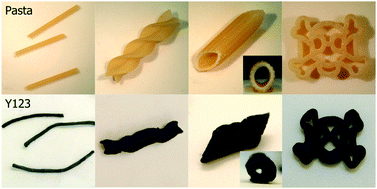Marc Abrahams's Blog, page 518
February 9, 2013
Carrots, carrots, carrots, in a rabbit
Having looked at a case of too much carrot in a man, let us now peruse a rabbit:
“Hyperostotic polyarthropathy in a rabbit‐a suspected case of chronic hypervitaminosis A from a diet of carrots,” J. L. Frater, Australian Veterinary Journal, vol. 79, no. 9, 2001, pp. 608-611. The author, at the Unviersity of Melbourne, reports:
“Chronic hypervitaminosis A can occur in many species after excessive dietary intake of Vitamin A (retinol). The most common presentation of chronic hypervitaminosis A is a polyarthropathy with hyperostosis and ankylosis of various joints. This case report describes a probable case of naturally occurring hypervitaminosis A-induced polyarthropathy in a rabbit after chronic ingestion of a diet made up almost exclusively of carrots. Carrots do not contain retinol, but are rich in provitamin A (or beta-carotene). Rabbits are unique in that they can convert 100% of dietary beta-carotene into retinol. A syndrome of naturally occurring hypervitaminosis A-induced polyarthropathy has not been described in a rabbit before.”
(Thanks to investigator Kurt Verkest for bringing this to our attention.)

February 8, 2013
Carrots, carrots, carrots, in a man
Another slight boost for the metaphor “you are what you eat”:
“Carrot man: A case of excessive beta-carotene ingestion,” Randy A. Sansone [pictured here, in black-and-white] and Lori A. Sansone, International Journal of Eating Disorders, epub March 19, 2012. The authors The authors, at Wright-Patterson Air Force Base, Dayton, Ohio, report, about their report:
“In this case report, the authors describe a 48-year-old male who complained to his primary care physician of abdominal discomfort and yellow/orange skin discoloration. Physical examination was normal except for some mild mid-abdominal discomfort (no observed skin color changes). An abdominal CT scan indicated a colon that was full of stool. Laboratory studies indicated elevated liver enzymes. Upon further questioning, the patient reported ingesting 6–7 pounds of carrots per week to facilitate his dieting effort. The patient was diagnosed with constipation, hypercarotinemia, and possible vitamin A toxicity.”


Pasta’s place in the history of superconductivity
Physics now owes a debt to pasta in research about superconductivity. This study explains:
“Designed 3D architectures of high-temperature superconductors,” David C. Green, Martin R. Lees and Simon R. Hall, Chemical Communications, epub January 31, 2013, with some supplementary data. (Thanks to investigator Pascal Dominez for bringing this to our attention.) The authors, at Bristol University and the University of Warwick, write:
“Self-supporting superconducting replicas of pasta shapes are reported, yielding products of differing 3D architectures. Functioning high-temperature superconductor wires are developed and refined from replicas of spaghetti, demonstrating a unique sol–gel processing technique for the design and synthesis of novel macroscopic morphologies of complex functional materials…. Spaghetti (own-brand durum wheat dried pasta) was purchased from The Co-operative Food (Cooperative Group Limited, UK), penne and fusilli (own-brand durum wheat dried pasta) were purchased from Sainsbury’s (J. Sainsbury’s plc, UK) and HonigTM Samen “Piraten Pasta” was a gift from Jamie Shenston (University of Bristol, UK) and Caroline Walker (Heinz).”
Some detail from the study:


February 7, 2013
Towards a robust nipple detector
 Increases in raw computing power and novel algorithmic techniques have enabled outstanding advances in image processing since 1999, when Drs. Forsyth and Fleck developed the first computerised system for Automatic Detection of Human Nudes.
Increases in raw computing power and novel algorithmic techniques have enabled outstanding advances in image processing since 1999, when Drs. Forsyth and Fleck developed the first computerised system for Automatic Detection of Human Nudes.
Now, researchers at the Institute for Infocomm Research, I²R (pronounced as i-squared-r), which is part of A*STAR, Singapore, have refined the idea of simple body-detection algorithms towards what they call ‘Organ Level Detection’. Nipples in particular.
Dr. Yue Wang, and colleagues have developed a method for automatic nipple detection using shape and statistical skin colour information.
“First the statistical information of skin color relation between nipple and region surrounding nipple has to be extracted, and then this information is used to filter off the non-nipple region detected in last stage.”
They used a carefully tweaked version of the now-classic AdaBoost algorithm which had been ‘trained’ on a representative dataset. Unfortunately though, despite its refinements, the new computer code is still quite a way away from the goal of 100% reliability. In a trial with 980 test images which featured 348 nipples, 263 were successfully identified – but 85 were missed. And there were 170 false detections (including navels and eyes etc). The team is currently working on firming up the software – and is at the same time developing an entirely new approach. “… the private part of human body must be detected as well. A different model has to be constructed for this purpose.”
See: Automatic Nipple Detection Using Shape and Statistical Skin Color Information (S. Boll et al. (Eds.): MultiMedia Modelling 2010, Lecture Notes in Computer Science 5916, pp. 644–649, 2010.) Here is further detail from the study:
Question : Is A*STAR an example of RAS syndrome like PIN number and LCD display?


How to impress an editor
Many of our finest articles were submitted by people I had never heard of. So were many articles that we declined to publish.
Yesterday a person I had never heard of submitted an article for publication. He wrote a short cover note. Here is our conversation, in which I played only a small part. The conversation was conducted via email:
PERSON: Dear Mr. Abrahams, Take the chance to perhaps graduate to some hardercore humor and thinking. I’d like to know whether I’m wasting my time here.
ME: I confess that what you sent me does not seem funny.
Sorry about that.
Marc
PERSON: I’m afraid that is either your presumption or your mediocrity speaking. Nothing to be sorry for.
PERSON: Do you have brighter friends with good senses of humor, relaxed attitudes, who are also known to be very thoughtful and knowledgeable? Maybe I’m taking some of my… dislike at the wrong person here, but I thought the Ignobel Prizes carried a somewhat different spirit than what might be the case. Perhaps they are just a substitute for taking a nap. The problem is despite the glut of minds nowadays, I can’t get a hold of one person to follow something relatively simple for just a few paragraphs. Hell, who knows? Maybe there’d be a point to giving some things further thought or further reading.
PERSON: Have I been asking for so much? What is it with everyone’s bizarre self-importance that you can’t give something a sober, calm, serious read if just for a few minutes that you came across in your inbox. Inboxes are kind of there for one basic reason. How can everyone be so goddamn busy? Or maybe I’m just not coming across anyone with their head screwed on right? It really surprises me. How can you morons not be made fun of?


February 6, 2013
Drunken sounds are ‘easy’, but in an unexpected way
The science of acoustics reveals an unexpected possible truth about drunks and language, says this study:
“Studying Hard and Easy Sounds with Drunken Speech,” Abby Kaplan [pictured here] (University of Utah), Acoustical Society of America – 161st Meeting Lay Language Papers, Presented Tuesday morning, May 24, 2011, 161st ASA Meeting, Seattle, Washington, Popular version of paper 2aSC33. (Thanks to Jennifer Ouellette for bringing this to our attention.) The author reports:
“This experiment studied whether some sounds are ‘harder’ to say than others – a popular idea, both among linguists and among laypeople, but one that is very difficult to test. The experiment involved having subjects drink a moderate amount of alcohol and then recording their speech, in the hopes that drunken speech would be ‘lazier’ – that is, that people would tend to say more ‘easy’ sounds while they were drunk. The results show that drunken speech has a narrower range of sounds than sober speech does; this is consistent with the idea that people tend to say easier sounds when they’re drunk. However, the results are also surprising: the sounds produced in drunken speech are not always the same as the ones that linguists usually think of as ‘easy’.”

“The largest prime number in the world”
Investigator Leslie Lamport writes: ” I heard this today on public radio’s Marketplace:
“A discovery of a lifetime (at least for the math geeks among us):
the largest prime number in the world.”
“This raises the interesting question of which prime numbers are in the world, and which only occur elsewhere.”
Other news outlets are reporting the same thing. The Kansas City Star goes farther:
“In the last seven years the University of Central Missouri has found the largest prime number in the world three times.”

Come to the Improbable Research show at AAAS Boston
At the AAAS Annual Meeting in Boston, come to the (annual!) Improbable Research show.
Where: Sheraton Boston Hotel (near the Prudential Center), Constitution Ballroom B
When: February 16, 2013, Saturday, 8:00-9:30 pm.
This show is FREE, and open to the general public — but space is limited, so get there a bit early. [TWITTER: #AAASmtg] Featuring:
Marc Abrahams , editor of the Annals of Improbable Research
George Wolford , Ig Nobel Prize winner (brain activity in a dead salmon)
Dr. Deborah Anderson , Ig Nobel Prize winner (effect of Coca-Cola on sperm motility)
Daniel Rosenberg (performing Moments of Science)
Robin Abrahams (letter from the Chinese translator of the first Ig Nobel book)
Corky White (“How I catered a Roman orgy for Harvard Professors”)
Dr. Thomas Michel , soprano Maria Ferrante , and colleagues will perform songs from Ig Nobel Operas
Gus Rancatore (of Toscanini’s Ice Cream, will unveil newly invented, scientifical ice cream flavors)
With the assistance of human spotlights Jim Bredt and Katrina Rosenberg [pictured below], who will illuminate the proceedings
With the assistance of eight-year-old Miss Sweetie Poo, who will keep things moving briskly
Others to be announced or inferred.

This photo shows the Human Spotlights illuminating a person of interest (Nobel laureate Rich Roberts) at the most recent Ig Nobel Prize ceremony. The show at the AAAS meeting will feature many illuminated persons of interest. PHOTO: David Holzman.

Stanley Finger’s “Phantom Penis: Historical Dimensions”
Stanley Finger presents:

Stanley Finger, seer of dimensions in phantom phalluses
“Phantom Penis: Historical Dimensions,” Nicholas J. Wade and Stanley Finger, Journal of the History of the Neurosciences: Basic and Clinical Perspectives, Volume 19, Issue 4, 2010. The authors, at the University of Dundee, Scotland and Washington University, St. Louis, Missouri, USA explain:
“We here present several early reports on phantom penile sensations, with the intent of showing what had been described and why more than 200 years ago.”
(Thanks to investigator Neil Martin for bringing this to our attention.)
BONUS: Professor Wade’s ”The ghost of Helioth and his stereoscope: the return of a phantom,” Perception, 41, 2012, 1001-1002.

What’s in a title? “Customers Infecting Other Customers”
The title of this study about “customers infecting other customers” is, in a sense, itself rather infectious:

The sepulchrally named co-author, Dr. Tombs
“Third Party Customers Infecting Other Customers for Better or for Worse,” Alastair G. Tombs, Janet R. McColl‐Kennedy, Psychology and Marketing, vol. 30, no. 3, March 2013, pp. 203-293. The authors, at the University of Queensland, explain:
“In this article the effect of the displayed emotions of third party customers and purchase occasion on customers are examined, even when there is no direct interaction between customers. Three independent studies, including two experiments are employed…. Results show that customers are “infected” by the displayed emotions of third party customers even when there is no direct interaction between the customers.”
(Thanks to investigator Neil Martin for bringing this to our attention.)

Marc Abrahams's Blog
- Marc Abrahams's profile
- 14 followers






